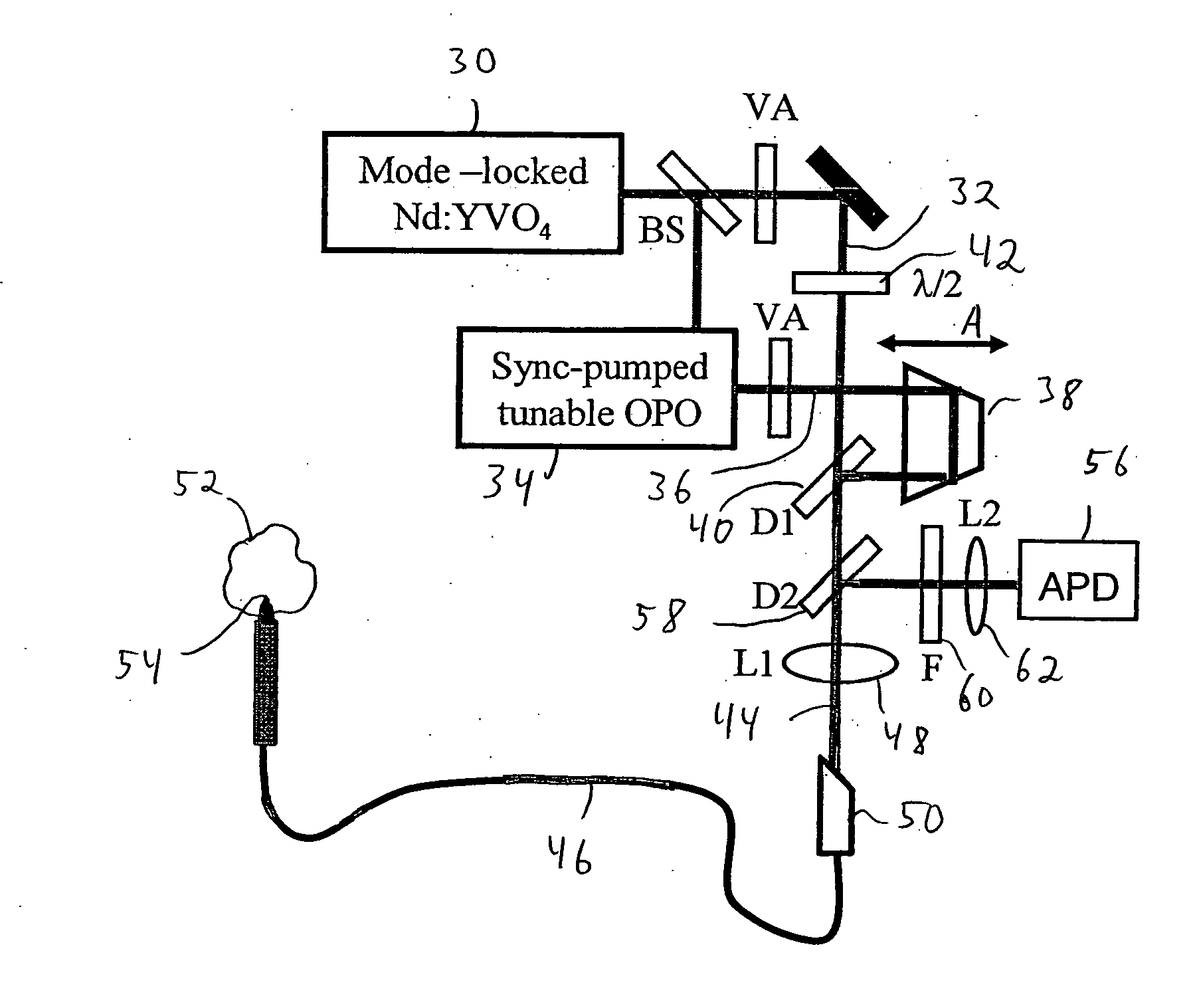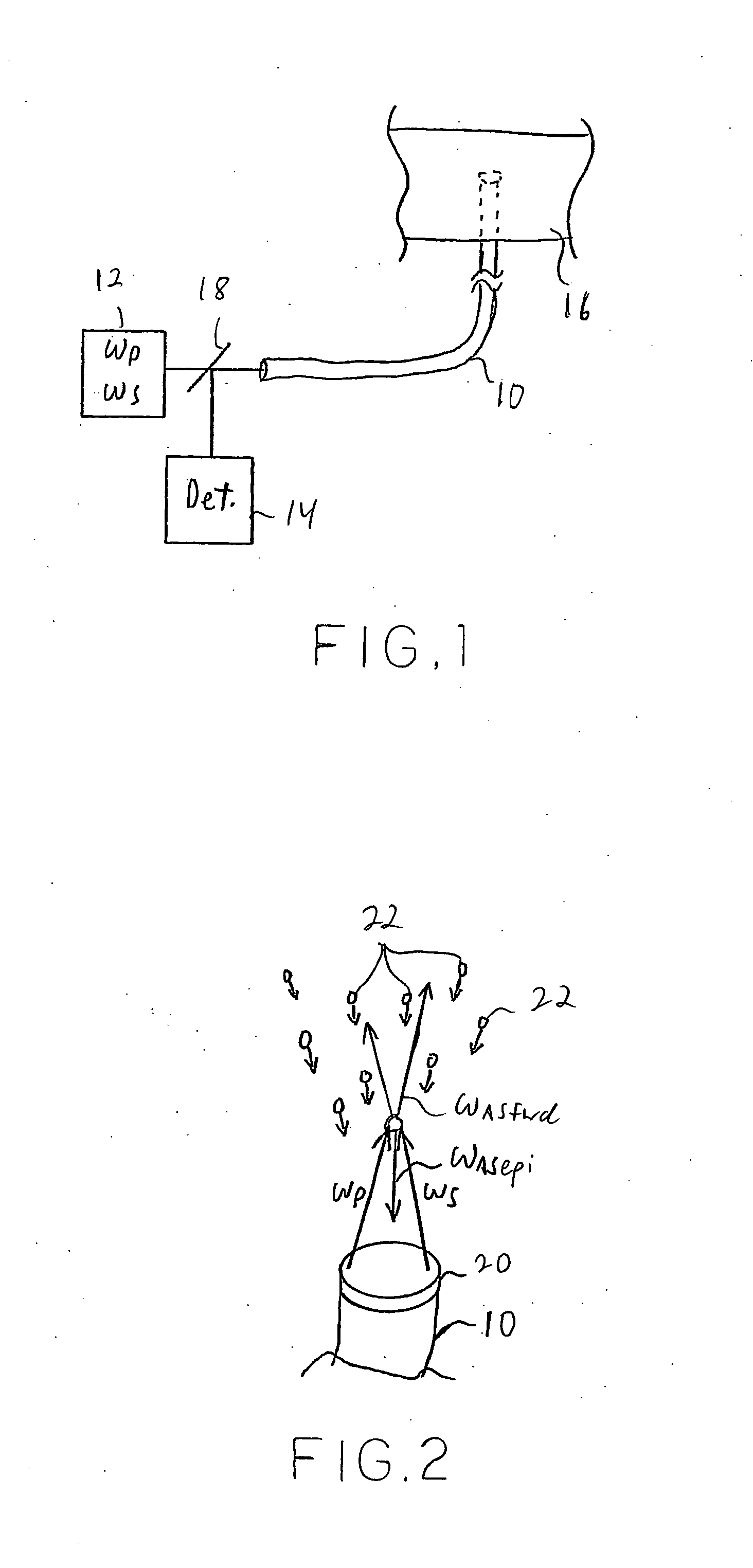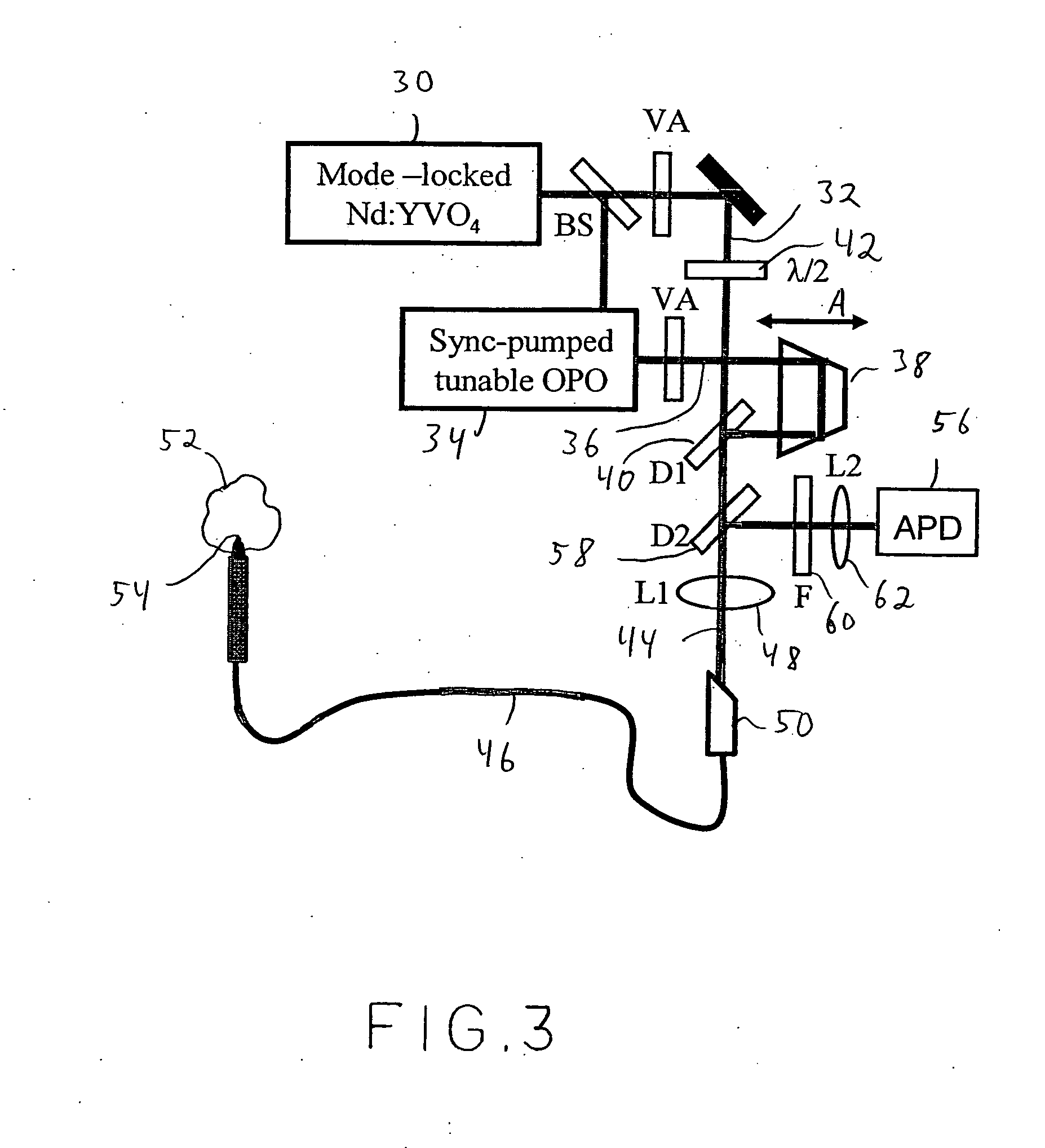System and method for coherent anti-stokes raman scattering endoscopy
a scattering endoscopy and anti-stokes technology, applied in the field of vibration imaging analysis, can solve the problems of polarization scrambling, samples are difficult to view using forward direction cars, and the effort to increase the sensitivity of cars is hindered
- Summary
- Abstract
- Description
- Claims
- Application Information
AI Technical Summary
Problems solved by technology
Method used
Image
Examples
Embodiment Construction
[0030] For many analytical applications in biomedicine, it is desirable to perform tissue imaging in situ. Endoscopic techniques have been widely used in medicine for applications including surgical interventions and disease diagnosis. Endoscopy has been carried out with contrast based on optical coherence tomography (OCT), one and two-photon fluorescence, and second harmonic generation. These advances have lead to immediate applications in clinical environments. While OCT has been very successful for imaging tissue morphology, its contrast is based on refractive index differences. Endogenous fluorescence endoscopy is sensitive to intrinsic biological fluorophores, which limits it generality. Second harmonic generation endoscopy is sensitive to non-centrosymmetric structures, but its application is limited to few biological materials. A CARS endoscope would offer label-free chemically-selective imaging in situ, making it an ideal tool for biomedical applications.
[0031] It has been ...
PUM
 Login to View More
Login to View More Abstract
Description
Claims
Application Information
 Login to View More
Login to View More - R&D
- Intellectual Property
- Life Sciences
- Materials
- Tech Scout
- Unparalleled Data Quality
- Higher Quality Content
- 60% Fewer Hallucinations
Browse by: Latest US Patents, China's latest patents, Technical Efficacy Thesaurus, Application Domain, Technology Topic, Popular Technical Reports.
© 2025 PatSnap. All rights reserved.Legal|Privacy policy|Modern Slavery Act Transparency Statement|Sitemap|About US| Contact US: help@patsnap.com



